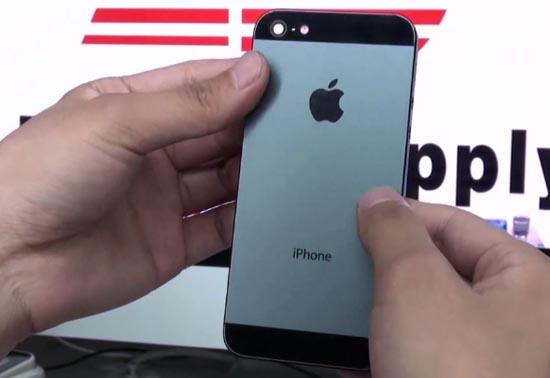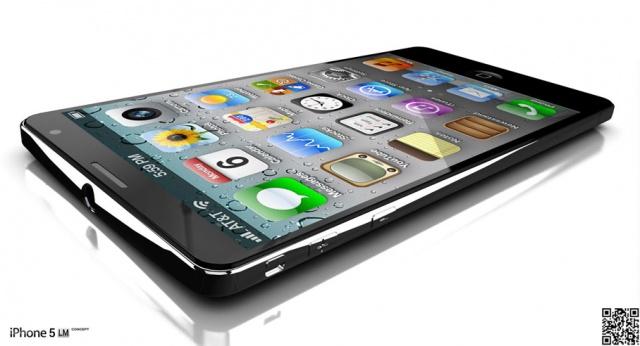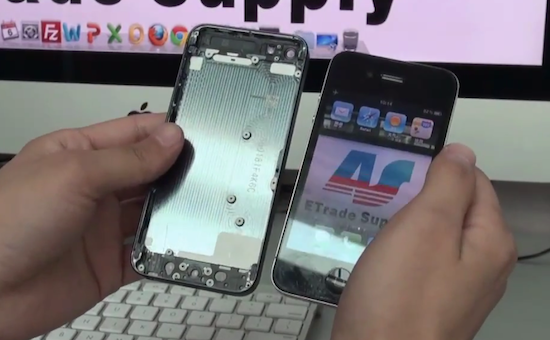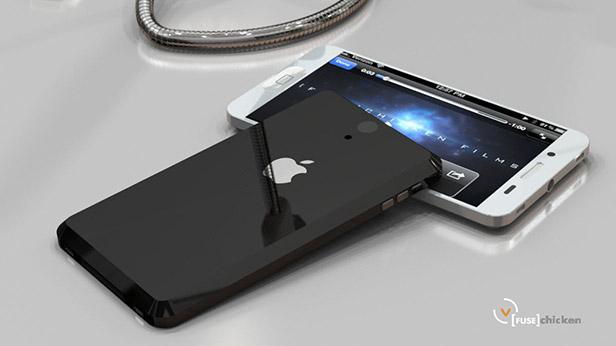
It's that time again. It's June and rumors of the upcoming iPhone are in full swing; it's almost as if new information, pictures and pieces of the puzzle are making headlines every day. Just last month, we got a first look at what many believe is the casing (or back panel) for the next iPhone. And late last night, we got a closer look at the same part.
ETrade Supply managed to get their hands on the purported, pre-production, next-generation iPhone back panel and gave us a four-minute video comparing the new port and button layout with that of an iPhone 4. For all we know, this could be the actual back panel of the next iPhone. But there is no real way to confirm or deny that until we actually see the next iPhone in Tim Cook’ hands sometime in the next couple months. So, while we wait for official word, take it with a great big ol’ grain of salt.
I won't deny, however, that I think this back panel looks nice. And it most certainly improves upon the existing design some. For instance, I like the fact that the 3.5mm headphone jack is located on the bottom. And I would be more than happy to see the over-sized and outdated 30-pin connector retired. But, in all honesty, I hope this is not the frame of the next iPhone. I hope Tim Cook & Co. are having a good laugh about how far off their trail we actually are. Here's why:

Many of the latest rumors have claimed Apple will use Liquidmetal in their next iPhone. According to the Liquidmetal Technologies website, Liquidmetal is an amorphous metal alloy with rather unique attributes, such as: high yield strength, hardness, superior strength/weight ratio, superior elastic limit, high corrosion resistance, high wear resistance and unique acoustical properties. Best of all, the metal can be heat-formed, similarly to thermoplastics. In other words, Liquidmetal parts are faster to manufacture than machined parts and bear the benefits of plastics, glass and other super hard alloys.
What would a Liquidmetal iPhone mean? Likely a much stronger and more lightweight device. Goodbye, back glass plate. Hello, Liquidmetal.
It's impossible to say whether the leaked chassis is made of Liquidmetal, but it looks more like anodized aluminum than anything. It's also worth noting that there is some belief that a full-fledged Liquidmetal device is still years from happening. Maybe so, but I'm still crossing my fingers for a Liquidmetal iPhone in September or October. A little wishful thinking never hurt anyone, right?

To be fair, I haven't seen the end product. No one has. But I don't like the size or shape of this new (potentially fake or even test) design. It seems to match up quite well with the rumors of a 4-inch display and a 16:9 aspect ratio. It brings several different rumors and sources together and seems to make perfect sense.
But I don't like it.
I would be perfectly happy with a 4-inch iPhone. (I'd be even happier with a 4.3- or 4.7-inch model.) But at 16:9, that frame looks gaunt. It's incredibly skinny and tall. I would rather see Apple stick to the 3:2 ratio and increase both horizontal and vertical pixels, and increase the width as well as height.

Notice in the picture above that the iPhone 4 and 4S design separates the middle plate (the piece that holds all the phone’s innards and the back plate/battery door (the glass slab on the rear). What this means is you can easily repair a broken, shattered or scratched back plate on the cheap and with relative ease. If you don't like the fragile glass back, you can easily replace it with an aftermarket aluminum back plate in under 30 minutes.
The purported next-gen iPhone part combines these two pieces into a single part, much like that of the iPhone 3GS. In a move that seems rather Apple-like, this could make repairs and aftermarket design alterations (like different colored back plates) difficult or otherwise impossible.
It certainly wouldn't be a deal-breaker for most people, not even for myself. And if the back turns out to be Liquidmetal, it could be more of a non-issue. But, even with the glass, I like how quick, cheap and easy iPhone back plate repairs (or simply replacements) currently are. A unibody design could certainly improve build quality and durability, but I'm not so sure about the materials being used.

For nearly two years now, the iPhone has featured roughly the same design. For almost as long, there have been rumors that the next iPhone would feature a major redesign. Internally, there were some fairly significant improvements from the iPhone 4 to the 4S. But the only external alteration made was an improved antenna design to avoid another antennagate debacle. To an untrained eye, they are identical.
Last year, arguably the most popular rumor was of an iPhone with a new teardrop profile. I always thought a redesign that dramatic may be a little far-fetched. But something to the effect of the above picture (also the Liquidmetal concept pictured above) would be a nice, refreshing change. (Yes, I'm a hypocrite. These two concept designs also have the middle plate and back plate as a single component.)
Something like the leaked parts – a much more conservative redesign – seems far more likely, far more like an Apple move. But that doesn't make me want a dramatically different iPhone any less. The current model is growing stagnant in both hardware design and software. People are predicting (and/or hoping for) big changes in iOS 6, which might be detailed next week at WWDC. A hardware refresh to compliment big software changes would be nice.
A lot of these things are just preference, totally subjective. But I'm not really impressed by what would essentially be a stretched iPhone with a slightly different chassis. I would much rather see something bizarre and radical, however unlikely that may be. Tell me, readers. Do you like the leaked parts? Do you hope they turn out to be real? Or, like me, are you hoping for something a little more drastic?